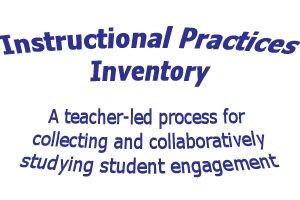 Thanks to Rick Reis’s Tomorrow’s Professor newsletter I bumped into an instrument that I think can be a very important addition to or replacement for teaching evaluations and/or student course evaluations. This Teaching Practices Inventory was developed by the Noble Prize winning Physicist Carl Wieman who was hired at the University of British Columbia to change his scientific research focus from Science to the Teaching of Science. UBC established an “initiative” for him at http://www.cwsei.ubc.ca/
Thanks to Rick Reis’s Tomorrow’s Professor newsletter I bumped into an instrument that I think can be a very important addition to or replacement for teaching evaluations and/or student course evaluations. This Teaching Practices Inventory was developed by the Noble Prize winning Physicist Carl Wieman who was hired at the University of British Columbia to change his scientific research focus from Science to the Teaching of Science. UBC established an “initiative” for him at http://www.cwsei.ubc.ca/
He has produced an instrument that allows Faculty to assess their course teaching design through a focus on activities- what the students actually do and resources they have access to. It provides a quantifiable score, only takes 10 minutes, is available for use free and online.
In the 2014 article below he notes the problems with other methods such as student end of course evaluations, peer or Chair observations and assessments and other time consuming and possible threatening assessment tools.
In the shorter article from Change Magazine
Wieman, C. (2015). A Better Way to Evaluate Undergraduate Teaching. Change Magazine, Jan-Feb. http://www.changemag.org/Archives/Back%20Issues/2015/January-February%202015/better-way-full.html.
Or the more scholarly work at
Wieman, C., & Gilbert, S. (2014). The teaching practices inventory: a new tool for characterizing college and university teaching in mathematics and science. CBE-Life Sciences Education, 13(3), 552-569.
Wieman explains the research base for each of the eight categories and the questions used to measure these. The categories are summed using a rubric. These categories are:
| I. | Course information provided (including learning goals or outcomes) |
| II. | Supporting materials provided |
| III. | In-class features and activities |
| IV. | Assignments |
| V. | Feedback and testing |
| VI. | Other (diagnostics, pre–post testing, new methods with measures, etc.) |
| VII. | Training and guidance of TAs |
| VIII. | Collaboration or sharing in teaching |
For each category the inventory asks teachers to list the activities that are components of the class, as for example the following:
-
Assignments with feedback before grading or with opportunity to redo work to improve grade
-
Students see marked assignments
-
List of topics to be covered
-
List of topic-specific competencies (skills, expertise …) students should achieve (what students should be able to do)
-
Assessment given at beginning of course to assess background knowledge
-
Teaching assistants receive one-half day or more of training in teaching (from http://www.lifescied.org/content/13/3/552.full)
The other benefit of this is that teachers who complete the Inventory are exposed to research-based best practices and can reflect on their own teaching practices. This is also much easier to complete than trying to coerce or hire external experts to do a course activity inventory.
All in all I think this is a very useful tool and as importantly, fast and easy to do!